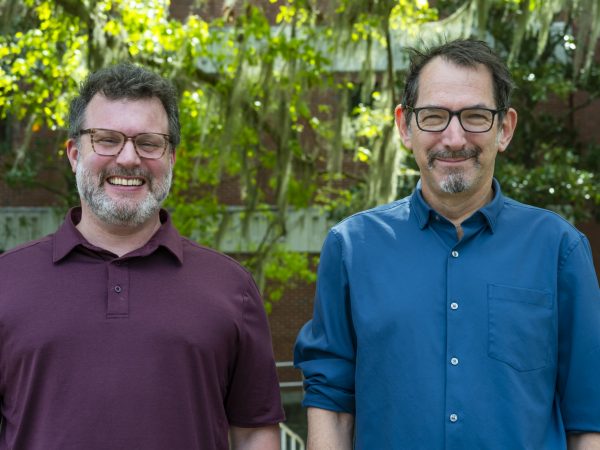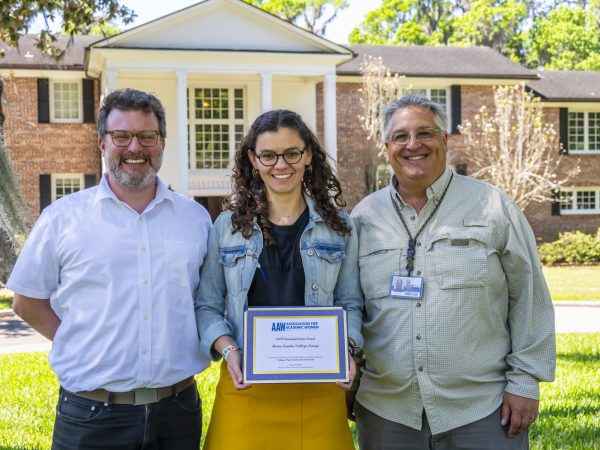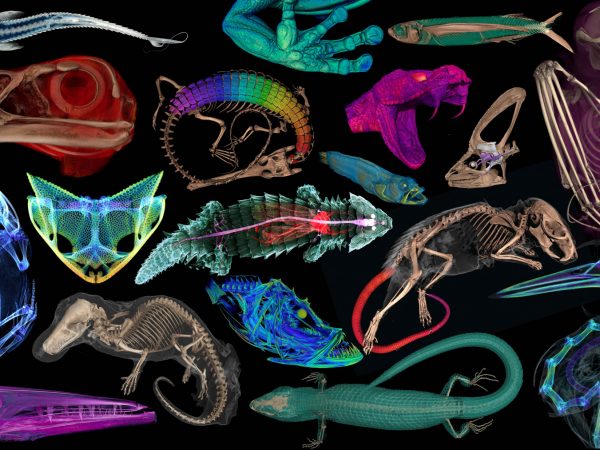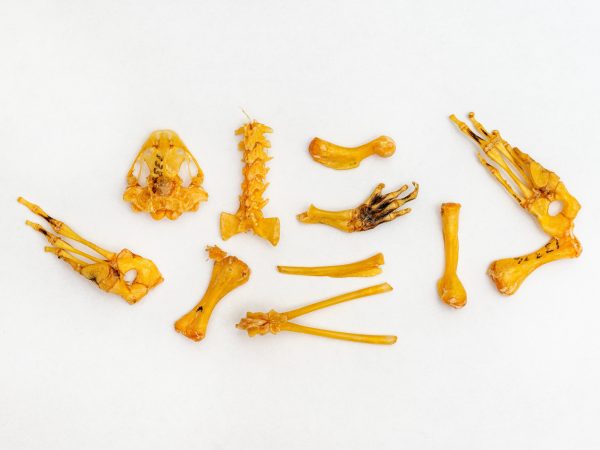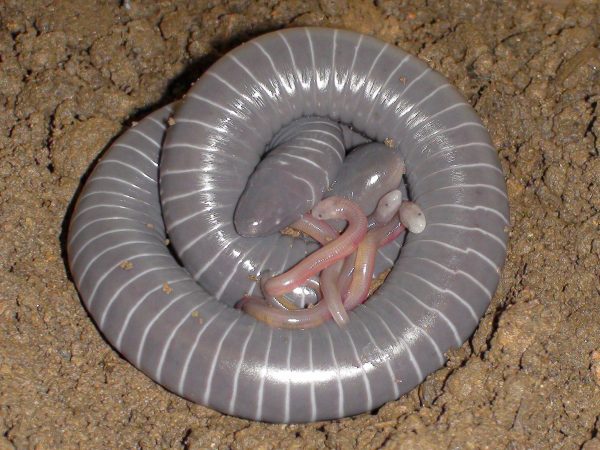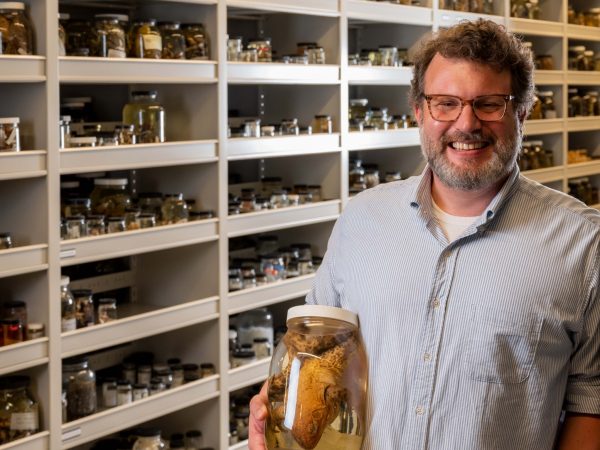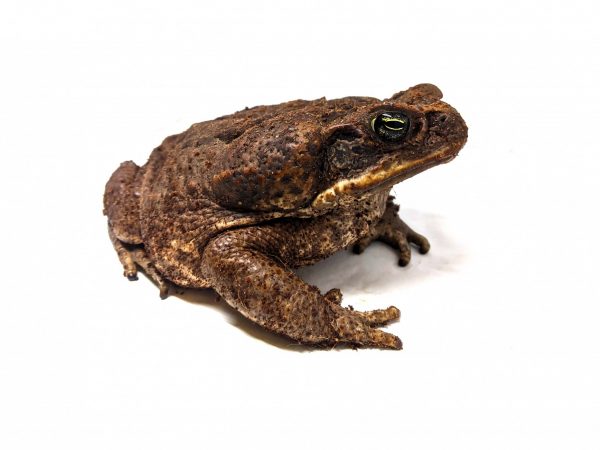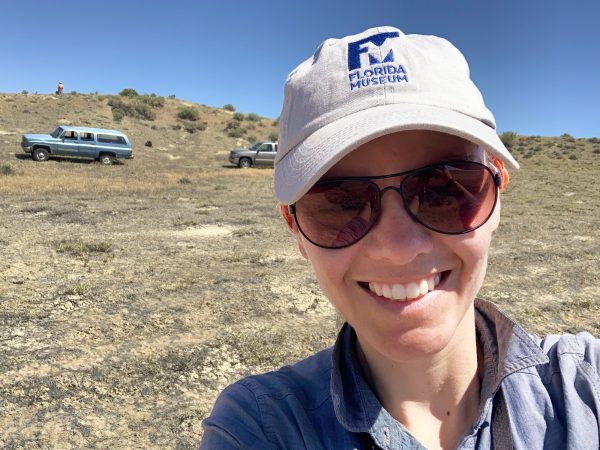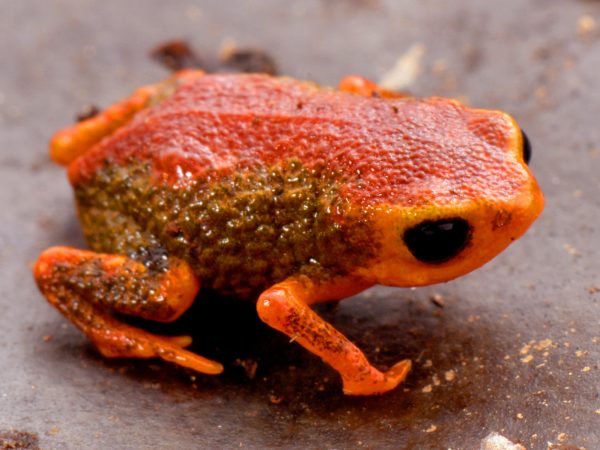Florida Museum curators David Blackburn and Robert Guralnick elected 2023 AAAS fellows
Two faculty members at the Florida Museum of Natural History have been elected as 2023 fellows of the American Association…
Read More
Maria Vallejo receives Emerging Scholar Award from the Association for Academic Women
María Vallejo-Pareja, a doctoral candidate at the University of Florida, has won an Emerging Scholar Award from the Association for…
Read More
Scientists CT scanned thousands of natural history specimens, which you can access for free
Natural history museums have entered a new stage of scientific discovery and accessibility with the completion of openVertebrate (oVert), a…
Read More
Frogs were Florida’s first-known vertebrates from the Caribbean
Deep in the forests of Haiti lives the blue-eyed La Hotte glanded frog (Eleutherodactylus glandulifer), which once went 20 years…
Read More
Wormlike animals are first amphibians shown to pass microbes to their offspring
Caecilians are an elusive type of amphibian that primarily live underground and look like a cross between a worm and…
Read More
David Blackburn named UF Research Foundation Professor
The University of Florida Research Foundation has named Florida Museum curator of herpetology David Blackburn as one of its 2023…
Read More
A hard pillbug to swallow: First X-rays of frog feeding show how they consume prey
The phrase “to swallow one’s tongue” has been around since at least the 1880s and has been repurposed in several…
Read More
Frog forelimbs may be adapted for love and war as well as jumping
Hold out your arm with your palm facing downward. Now rotate your hand 90 degrees to give a thumbs-up without…
Read More
Maria Vallejo-Pareja receives paleontology society grant in a first for frog researchers
Maria Vallejo-Pareja, a graduate student at the University of Florida, recently received the Estes Memorial Grant from the Society of…
Read More
Miniature frogs set record as first vertebrates to lose the ability to balance
Amphibians are exceptionally good at being small. There are salamanders the size of your thumb nail, pygmy newts that live…
Read More
